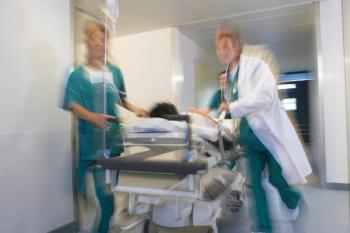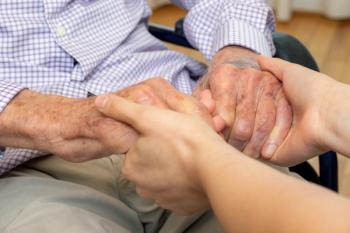
Wearable Device, Machine Learning Predict Pancreatectomy Outcomes
The highest performing machine-learning model achieved an AUROC of .7875.
Machine-learning models outperform American College of Surgeons National Surgical Quality Improvement Program surgical risk calculator (ACS-NSQIP SRC) estimates in predicting textbook outcomes after pancreatectomy.
The findings suggested this method can provide physicians with real-time actionable data that can be used to modify management of patients undergoing pancreatectomy. Further interventions may also be developed to increase patient activity.
Heidy Cos, M.D., and colleagues provided patients with wearable telemonitoring devices before undergoing pancreatectomy and evaluated predictive outcomes. Patients included were scheduled to undergo pancreatic resection, had access to a smartphone, were at least 18 years old, and were able to understand and willing to sign an institutional review board-approved informed consent document.
The team conducted a prospective, single-center, single-cohort trial to evaluate the wearable device, a Fitbit Inspire HR, to measure daily activity in patients undergoing pancreatectomy. When patients consented to the study, they were provided a device and assisted in setting it up with their smartphone. The Fitbit saved up to seven days of minute-to-minute activity metrics and accessory data.
Cos and the investigators applied feature engineering techniques to extract three types of features from the activity metrics data: statistical, semantic, and biobehavioral rhythmic features. They extracted statistical features from the daily step count, heart rate, and sleep time-series data. Semantic features provided summaries of the patient’s daily activity level and sleep quality. Biobehavioral rhythm-related features were collected from the step count and heart rate time series.
The team developed, trained, and evaluated multiple machine-learning models for their ability to predict outcomes by discovering complex underlying patterns from the data collected. They then compared the models with the clinical patient performance status assessment tools, including the ACS-NSQIP SRC. The machine-learning models were applied to patient clinical characteristics, features derived from remotely collected activity metrics, and patient clinical characteristics and features derived from remotely collected activity metrics.
Overall, 48 patients completed the study, and the activity metrics were collected over an average of 27.8 days before surgery. Those included took an average of 4,162.1 steps per day and had an average heart rate of 75.6 beats per minute.
More than half of the patients (58%) had a textbook outcome after pancreatectomy, which was defined as the absence of postoperative pancreatic fistulae, bile leak, post-pancreatectomy hemorrhage, sever complications, readmission, and in-hospital mortality. Of the 42% of patients who did not have a textbook outcome, 14 patients had severe complications and 11 patients required readmission.
The ACS-NSQIP SRC had an area under the receiver operating curve of .6333 to predict failure to achieve a textbook outcome. The machine-learning model combining patient clinical characteristics and patient activity data achieved the highest performance with an area under the receiver operating curve of .7875.
The study, “








































